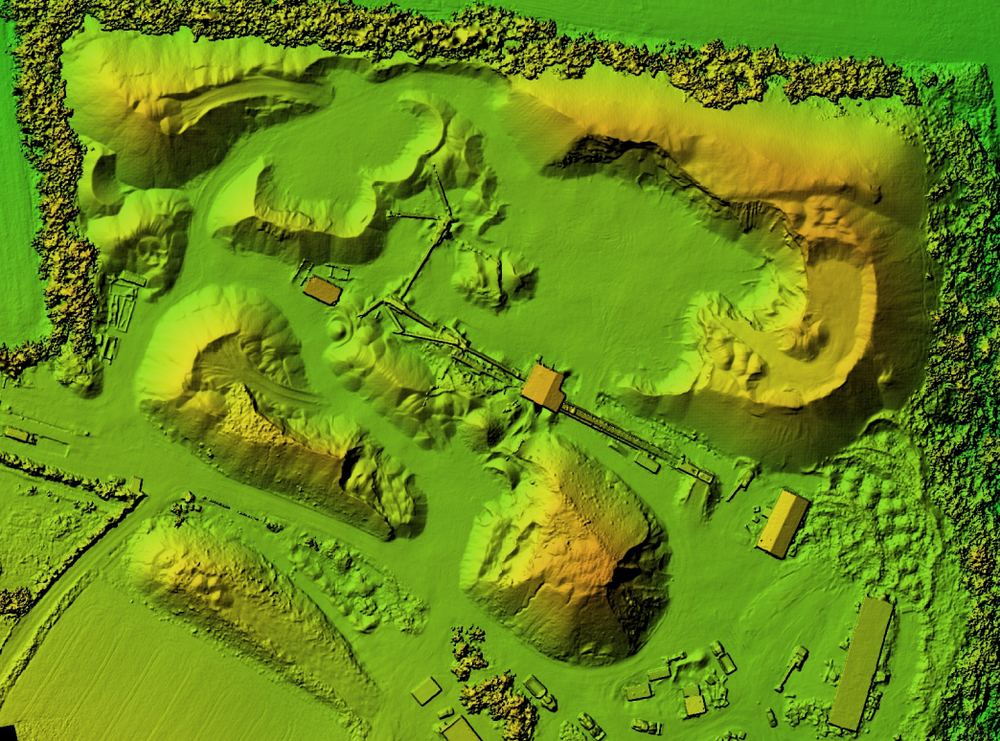OBIA and Point Clouds
Is object-based image analysis (OBIA) suitable for the semi-automatic classification of Lidar point clouds? Read more about the promising prospects. Object-based image analysis (OBIA) has been develop...
技术进步有一个主要目标:make it easier for us to accomplish tasks. Each new technology must show that it has solved a problem, and point cloud modeling is not different. For a long time, conducting land surveys was a bit of a challenge. Surveyors, contractors, and engineers invested numerous resources in these activities, increasing the project costs and periods. Point cloud modeling, a new concept, has since changed this and made it easier to survey work sites.
Point clouds feature an array of data points, with each point comprising X, Y and Z coordinates. Each data point indicates a surface area, creating a 3D structure that surveyors and engineers alike can study. In addition,point cloudsare manipulatable to reveal more details about a site, e.g., its terrain and features.
Point cloud modeling is thus the art of creating point clouds, which is possible using LiDAR and photogrammetry.
LiDARis not necessarily a system. Instead, this term encompasses the tools used in point cloud modeling using remote sensors which collect dimensions from a site and convert these into a 3D model. From objects to environments, these tools map out areas using ultraviolet or near-infrared light. The tools send light pulses and measure how long the pulses take to return to the scanner based on the ground or launched from a drone. Based on the working mechanism of a laser system, the pulses move through a gain medium like those available inEksmaOptics.comfor their amplification. The LiDAR tools then convert this pulse to-and-fro time into direction and distance by covering a circle in several sweeps. Finally, the tools create point cloud data in 3D models with X, Y and Z coordinates from each reading. If possible, GPS timestamps are added to the model. LiDAR applies to various materials, including clouds, rocks, rain, and even aerosols. It has proven to be a gem to people working in fields where physical access might not be possible.
While this method has worked great, it comes saddled with a few challenges. First, the beams must have sight access which can be tricky if there is bad weather. Secondly, reflection from surfaces can interfere with data collection.
Rather than relying on laser beams to map out sites, this method uses drones to capture pictures of a site. A camera mounted on the drone does the trick. Given that cameras rely on angles, there is a need to adjust the camera for each site’s environmental conditions. Moreover, the person handling the camera should also adjust the angles to ensure that the pictures get the whole scope.
What follows is the processing of the photos to create an overlap which creates a 3D mesh. The overlaps require reconstructing, where the person creating the mesh must fill in the gaps between the data points. The fewer images and angles there are, the more gaps there will be, increasing the processing time.
While there are other ways to create 3D models, people using point cloud modeling enjoy the benefit of:
Is one point cloud modeling method more effective than the other? As far as accuracy goes, both methods have similar efficacy rates. Therefore, choosing either option comes down to your requirements in the project and how easy it is to implement one of the techniques.
We encourage you to subscribe to our weekly newsletter. Subscribers also receive a digital copy of our bi-monthly magazine.

Is object-based image analysis (OBIA) suitable for the semi-automatic classification of Lidar point clouds? Read more about the promising prospects. Object-based image analysis (OBIA) has been develop...

Direct utilization of dense, coloured point clouds in a virtual world is motivated by many reasons. The point clouds themselves are efficient to produce with 3D mapping methods. The immersive visualiz...

Why is unsupervised segmentation the key to sustainable automation? Automation in point cloud data processing is central for building efficient decision-making systems and to cut labour costs. The ide...

Is it possible to enhance point cloud accuracy and density by merging Lidar with photogrammetry technologies? Lidar data can penetrate trees and measure shadow areas to produce a very accurate point c...

A deep learning architecture called MMCN opens up the possibility for the fully automated classification of highly dense 3D point cloud data acquired from a mobile Lidar system. This offers interestin...

The reconstruction of building outlines provides useful input for land information systems. In the city of Kalochori in northern Greece, a mixed commercial and residential area of 33 hectares was sele...

A new algorithm has been developed that automatically identifies architectural elements and creates 3D models of building interiors. Over the last decade, the demand for digital twins has increased in...

The Vercator toolkit offers a ground-breaking approach to generating survey data for a BIM process. Produced by a UCL spin-out company, Correvate, this article touches on the robust automatic registra...

Multiple view oblique imagery of very high resolution is a rich source of semantic information about buildings and other objects on the Earth’s surface. The efficient extraction of semantic informat...
这个网站使用cookie。由有限公司ntinuing to use this website, you agree to ourCookies Policy.Agree